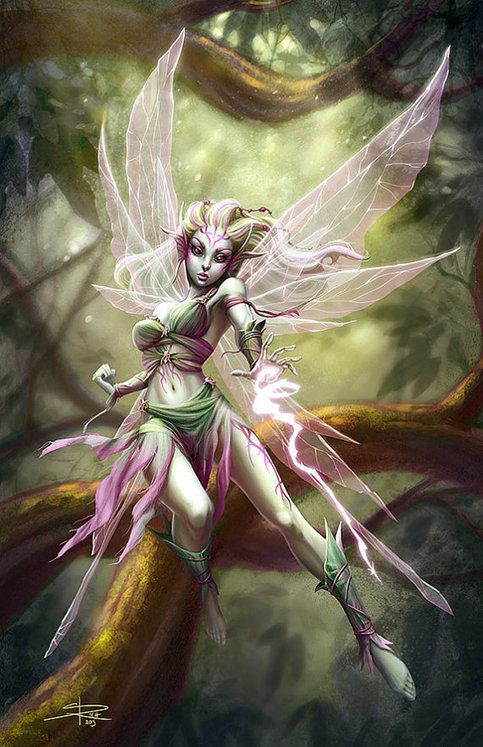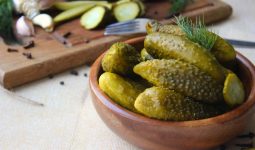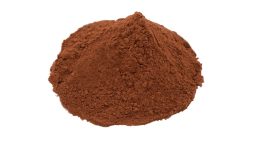The list below includes modern and traditional types of fairies and a few species linked in some manner.
Faeries (also known as Fae) are mostly found in Celtic mythology and are far darker than modern interpretations.
Most fairies may be traced back to the Irish Áes Sídhe (People of the Mounds).
These are claimed to be survivors of a conflict between native Celtic peoples (known as the Tuatha Dé Danann) and invading Vikings.
Since the Fae are typically spirits, they may be related to other species. Much of this story may be traced back to 11th-century monks and may be propaganda, but it may be true.
1. Pixies

The winged pixies, who stand no taller than 6 inches, are among the different types of fairies. They may shape-shift the size of their humanoid form as needed.
These pixies may be curious, fun-loving creatures but also have a dark side. They have a strong sense of responsibility for other, similar-sized fairies (brownies and gherrings) and frequently serve as peacekeepers.
Pixies adore flowers and gardens, and they, like hummingbirds, enjoy sipping nectar from blooms such as honeysuckle.
Since they have a fast metabolism, they regularly consume high-energy meals such as sweets, milk, and cream.
These hardworking, industrious people live in vast colonies meant to keep them secure. They build their cities high in the trees and magically conceal them, making them difficult to find.
When confronted with a threat, they prefer to confront it as a large cloud of angry pixies, comparable to a swarm of bees.
Despite their fierce protective stance, they are extremely friendly, compassionate, and helpful to several species, including humans.
Pixies have a lifespan of 100 years and are controlled by a king or queen. Pixies are among the most popular fairies and the fairy most commonly encountered by humans.
2. Gnome
Gnomes are among the different types of fairies typically imagined to be little, bearded creatures wearing pointed, colorful conical caps.
They dwell in natural locations near the Earth and care for animals. They are commonly described as a little humanoid monster that lives underground.
They are classified as earth elementals by Paracelsus. A race of earth-dwelling small, deformed, dwarf-like beings.
The medieval scholar Paracelsus named them “gnomes” to designate the most significant of the earth spirits.
Gnomes reside beneath the soil, guarding riches. Paracelsus says they travel through the earth as readily as people do.
They can’t resist the sun’s rays; merely one would turn them to stone. According to some stories, they spend the day as a toad.
Gnomes are somehow linked to goblins and dwarfs. They are thought to live for 400 years and are hardworking, kind, and smart. They value family and are virtually always cheerful.
They always reside in rural locations, sometimes even on (or underneath) farms, and offer farming advice. Despite their kindness to people, gnomes are nonetheless exceedingly secretive.
They never reveal the location of their caves to humans, never teach non-gnomes their language, and only surface when they want to.
3. Brownies
This adventurous and brave fairy may grow to a height of 6 inches. These different types of fairies are also known as “nims” on their planet but are more popularly known as “brownies” because of their brown clothes and near closeness to the ground.
They don’t have wings, yet they can get to high areas with the aid of a bird or each other when necessary.
Brownies live in the wild, in the woods, or in tall grass, where they regularly make hidden or buried homes.
They do this to defend themselves against bigger and stronger entities than them. Brownies are sociable fairies who love to live in towns or large family groupings.
To live, they scavenge and spend their days looking for food, household items, and other stuff to trade. When it comes to people, they are often friends with people who share their beliefs.
4. Dwarf
Dwarf is a being from Germanic mythology and folklore who inhabits mountain interiors and mining lower levels.
Dwarfs came in various sizes, with some standing more than 18 inches (45 cm) tall and others scarcely at around the height of a two-year-old kid.
Their ties to the underground grew more prominent. Dwarves were supernatural creatures with incredible metallurgical skills, and they gained a reputation for creating legendary objects.
5. Elves
Elves are a long-lived race that may be found all over the planet. They thrive in arts and crafts because they have sharper senses, elegance, agility, and perceptions than humans.
This includes magic, which they describe as the gathering, concentrating, and directing of natural energy.
In general, elves reject technology and live in harmony with nature, appreciating and cooperating with all parts of nature.
Elves are around the same height as humans but have a slimmer physique. Their appearances resemble those of humans, yet they are significantly different.
As seen in literature and movies, elves have high cheekbones, more angular features, captivating eyes, and pointy ears. They are divided into Seelie, or light elves, and Unseelie, or evil elves.
The Seelie elves generally desire to cooperate with humans to fix the Earth, but the Unseelie would rather solve their issues by eradicating humanity.
The Elves of Fyn, the source of the knowledge on this site, are part of the first group (Seelie), and you may learn more about them here. To be safe, humans should avoid all interactions with the Unseelie.
6. Dryad
A dryad is a female tree spirit or tree nymph. In Greek mythology, the dryads are feminine spirits of nature (tree nymphs) that rule over groves and woods.
Each one is born with a certain tree that she watches. A dryad lives in or near a tree, which is why she is known as a hamadryad.
The dryads’ lives are intertwined with the lives of the trees; if the tree dies, she dies with it. If a mortal is responsible for this, the gods will punish him. The dryads will likewise punish any careless mortal who harms the trees.”
7. Merfolk
These different types of fairies are known as mermaids and mermen. Unlike humans, this type of fairy does not reside in buildings or houses.
They swim as a family unit but are also part of a broader society unified under a single monarch. Merfolk spends most of their day foraging for fish and other marine animals to eat.
They purposefully create big families since life at sea is risky, and many of their children do not survive until adulthood.
The mermaid has recently become more apparent because they are concerned about the massive amount of oil spills and pollution that has seeped into their world from another world.
They are typically upset with the pollution and ruin of their waterways, and they consider humans entirely responsible. The argument they’re trying to make right now is that the health of the seas impacts everyone.
8. The Seelie Court
The Seelie Court, also known as the Blessed Court, is a group of benevolent spirits who are kind to humanity.
They warn people who have inadvertently insulted them and promise to repay human generosity with their own.
While the Seelie court fairies liked playing pranks on people, they were typically harmless events, unlike the Unseelie court, which relished causing harm to humans as entertainment.
The Seelie court is also known as ‘The Shining Thron,’ ‘The Golden Ones,’ and ‘The Light Court.’ The Seelie Court frequently utilized these expeditions to locate persons in need of assistance. The Seelie were also prone to mischief, particularly when drunk.
9. The Unseelie Court
The Unseelie Court, also known as the Unblessed Court, contains the most spiteful, malevolent, and malignant faeries. They take enormous joy in harming humanity.
The Unseelie, also known as the ‘Unblessed Ones,’ was represented as a black cloud riding on the wind, from which their unsettling cackles and screams could be heard.
They were not inherently malevolent, but they were not nice. These wicked creatures were inclined toward wickedness and were frequently malignant.
The Unseelie Court was nearly always out to harm or, at the very least, befuddle and deceive humanity.
10. Trooping Fairies
Trooping fairies are similar in appearance to brownies and lack wings. They are a little different from your regular brownie.
Compared to the more rustic and friendly brownies, they have a more serious, ordered, and refined existence.
Trooping fairies prefer to move through the woods with a lot of underbrush to avoid being seen. Some people think they live in trees, which are sometimes referred to as “fairy trees.”
11. Redcaps
In British folklore, a Red Cap or Redcap, a power or dunter, is a wicked, deadly goblin, elf, or faerie.
They live in ruined castles along with England’s and Scotland’s borders. Redcaps are reported to kill visitors who enter their houses and color their hats with the blood of their victims.
Indeed, redcaps must frequently murder since they perish if the blood coloring on their hats dries out. Even though they carry hefty iron pikes and wear iron-shod boots, redcaps are extremely swift.
It is difficult to outrun the buck-toothed tiny demons; the only way to avoid one is to mention a Bible scripture.
12. Leprechaun
In Irish tradition, a leprechaun is one of the different types of fairies. He generally takes the shape of an elderly man dressed in a red or green cloak who likes trouble.
The Leprechauns spend all their time manufacturing shoes and saving all their cash in a hidden pot of gold at the end of the rainbow.
If humans ever kidnap the Leprechaun, he possesses the magical ability to fulfill three wishes in exchange for their freedom.
The Leprechaun is commonly shown as no taller than a young child, with a beard and cap. Their occupation is cobbler or shoemaker.
They are reputed to be immensely wealthy, with several treasure crocks buried during the battle. They are known to be immensely wealthy, with several treasure crocks buried during the battle.
According to tradition, if someone maintains their attention locked on one, he cannot escape; nevertheless, he vanishes as the gaze is gone.
Many stories depict the leprechaun outwitting a human. Most myths and legends show leprechauns as typically peaceful beings that prefer seclusion and reside in isolated regions; however, opinions differ on whether they ever enjoy the company of other spirits.








